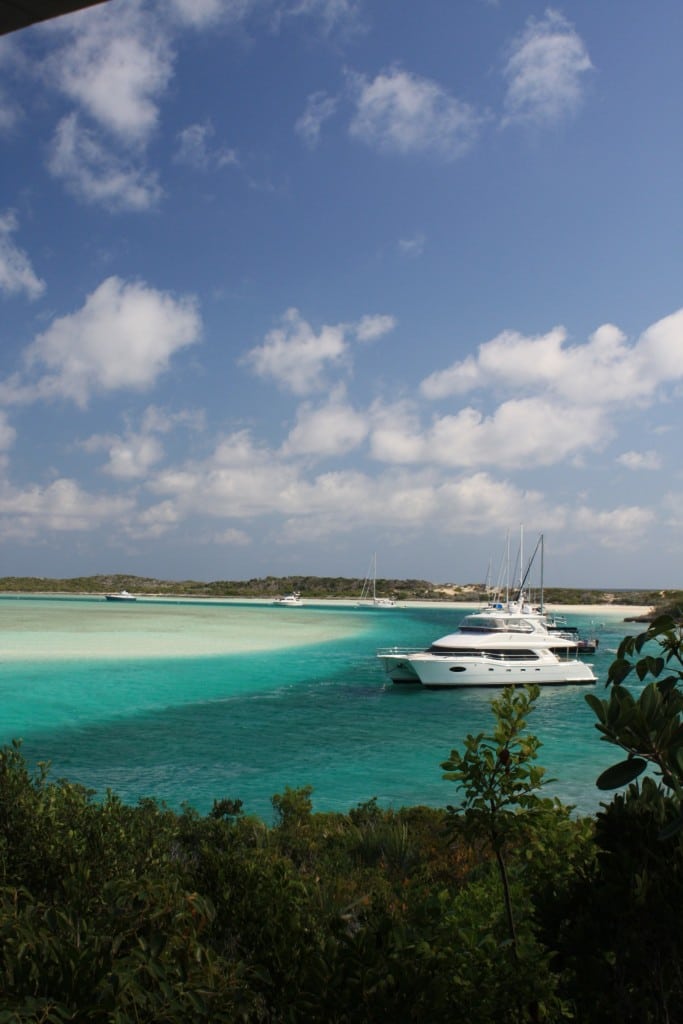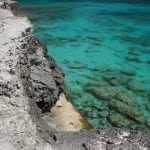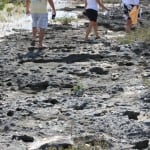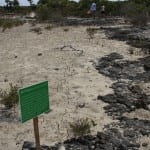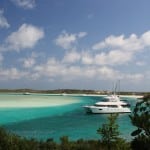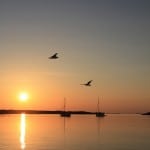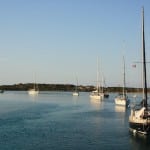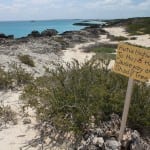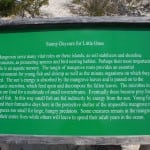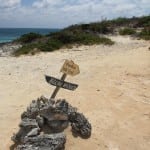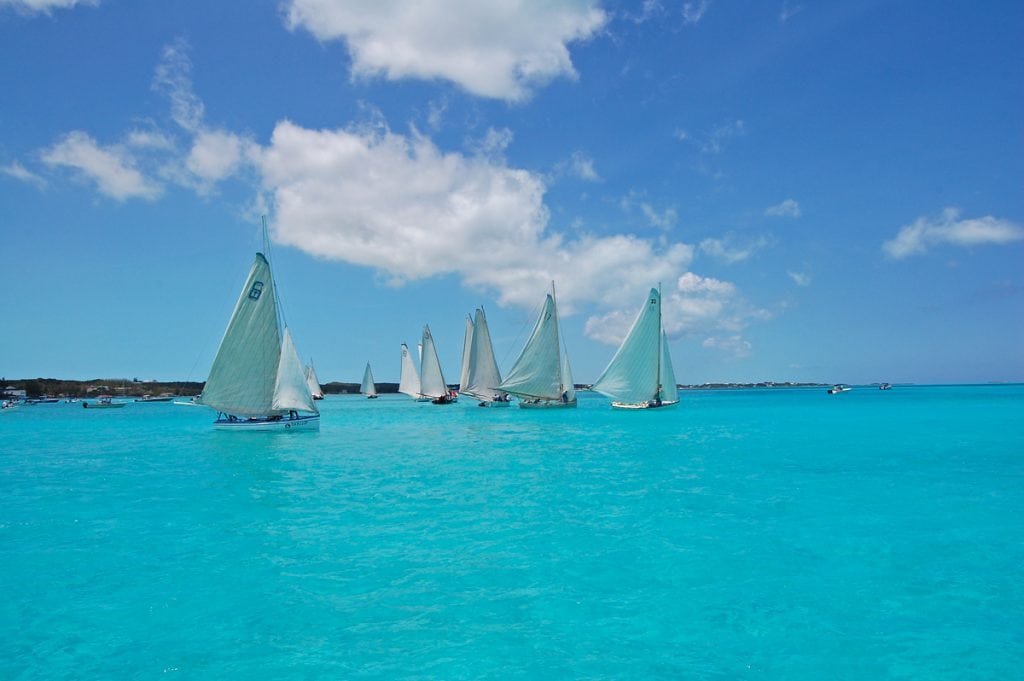The beauty and inspiration of this national treasure
must be experienced to be fully appreciated.
I grew up in a family that loved camping, especially in the northernmost part of Minnesota known as the Boundary Waters Canoe Area on the U.S.-Canada border. My husband and I raised our four young sons to enjoy camping as well, and some of our favorite camping memories were made in or near one of the country’s many national parks. We especially remember the Badlands National Park and Mount Rushmore National Memorial in southwestern South Dakota. Early one morning we awakened to a thundering herd of buffalo coming down from the hills and crossing the road to drink water from a pond where we had been fishing the evening before. National parks exist in an estimated 100 countries around the world, including our island neighbors to the east, The Bahamas.
The Bahamas’ 27 National Parks are managed by the nonprofit organization The Bahamas National Trust (BNT, bnt.bs), which was founded in 1959. BNT was formed to build, manage, protect, and conserve the natural resources of The Bahamas for future generations of Bahamians and also for visitors. The first of the parks to be established was also the first of its kind in the world to include both land and sea. The Exuma Cays Land and Sea Park (ECLSP) stretches for 22 miles, encompasses 176 square miles and offers outstanding anchorages and mooring sites from which to appreciate its magnificent beauty above sea level and below.
It should be noted that several private islands are within the park’s borders: Little Pigeon Cay, Cistern Cay, South (or Little) Halls Pond Cay (reportedly owned by Johnny Depp), Soldier Cay, Bell Island, and Little Bell Island. Cruisers should take care to stay off these islands and remember that with more than 700 islands in The Bahamas, there are plenty for everyone to enjoy without infringing on anyone’s privacy.
For southbound cruisers approaching the Exumas from Nassau, a stop at Highbourne Cay offers a protected marina and shoreside dining if the chef needs a night off. The office should also have waterproof dinghy and snorkeling guides for Exuma Park’s Shroud and Hawksbill Cays (both uninhabited), with locations of mooring fields, which are on a first-come, first-served basis. Shroud Cay’s meandering creeks will have you feeling like an adventurous explorer as they wind through mangroves and then empty into Exuma Sound. Exercise your legs with a walk on one of the prettiest beaches in the Exumas, though you’ll be hard-pressed to choose your favorite since Hawksbill Cay offers several as well. Plus, you’ll want to explore the ruins of the Russell Plantation from the Loyalist period.
Warderick Wells is, for most park visitors, the highlight of a visit to ECLSP and the home of the park headquarters and visitor center. Call ahead (VHF 16 or 09) for a mooring assignment and if you need help navigating the narrow channel. The mooring field is well protected from all directions, so it’s a great location to ride out a windy squall. The daily or nightly cost is based on the size of your boat and ranges from $20 to $150. If you choose to mingle with other cruisers, they congregate on the beach for a daily happy hour. You’ll know you’re at the right place by the sperm whale skeleton on the beach. Bring bug spray to ward off the no-see-ums.
This was the first location for the ECLSP and was established in 1958 to preserve the fragile flora and fauna. It also serves as a marine, bird and animal sanctuary. Pack a water bottle and good hiking shoes or toe-covered sandals, and take your RIB to the beach to pay for mooring at the office and see the visitor center. Then get ready for a long or very long hike depending on which route you prefer. Either way, you’ll tread on jagged, lava-like rocks, which can be treacherous for any but the sure-footed. The path I took was only 2.5 miles, but adding in the rocky factor made it feel longer. On top of Boo Boo Hill we noticed many small shells and little bits of sea glass on the path from the surf blowing them through several blowholes. Ample signage educates hikers along the path to the many anomalies that are exclusive to this park. For example, in the mangroves we learned about the “sacrificial” leaf on each plant, which takes on all the salinity of the water so that the rest of the tree can live and thrive. If you’re lucky you’ll see a hutia, a small nocturnal mammal found nowhere else in The Bahamas. As everywhere else in the park, take only pictures and leave with only footprints.
Cambridge Cay’s moorings are on a first-come, first-served basis and offer convenient access to several superb snorkeling sites that are described in the ECLSP snorkel guide, including the spot known as the Aquarium for good reason. Bring your stale bread to feed the greedy little fish. There are lovely corals here of all varieties and colors that are well protected and too deep to stand on by inexperienced snorkelers who don’t know the damage they can cause to these fragile creatures. When snorkeling anywhere in the park, it’s extremely important to be aware of the strong currents. Our gracious host on a Horizon powercat charter told us he once rescued an elderly couple here. The woman could not get in the dinghy, which was on a mooring ball, and she had lost track of her husband while snorkeling, who was found gasping for breath several hundred yards away having been carried away by the outgoing tide.
Very close to Cambridge Cay is another small island (unnamed on any of the maps I searched), where you can take your RIB to a tiny (maybe 10 feet wide) beach just inside the cove. There’s a deeper hole that serves as a swimming pool of sorts, and certainly one that claims a preferred spot in my memory bank.
Last, but certainly not least, is a cave-snorkeling experience that’s not to be missed. Though it’s not technically within the borders of the ECLSP, “Thunderball Cave”—named after the James Bond movie Thunderball—is very close. It’s important to time your visit there during low tide so that it’s easier to get in and out of the jagged cave opening. Watch your head when entering as the tide runs fast in the entrance. Once you’re inside the cave, holes in the cave ceiling let in natural light and illuminate the air above and the water beneath.
In a neighboring cave on Rocky Dundas—which is within the ECLSP—when the sun is directly overhead, the illumination is a tunnel of light that the locals call “the finger of God.” I wasn’t fortunate enough to experience this island or cave, but I hope to some day. Like Michelangelo’s painting on the ceiling of the Sistine Chapel in Rome, Creation of Adam, when one can experience the finger of God, in any form, on any island, one should.
Story & photos by Liz Pasch Southern Boating
May 2017

